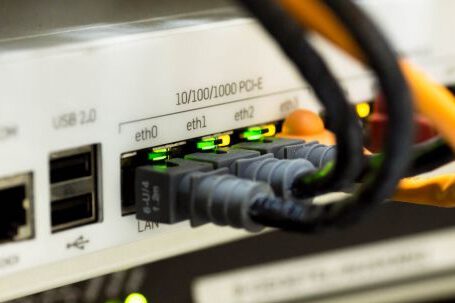Data centers are the backbone of modern digital infrastructure, playing a critical role in storing, managing, and processing vast amounts of data. As technology continues to evolve at an unprecedented pace, data center technologies are also adapting to meet the changing demands of businesses and consumers. In this article, we will explore the key trends that are shaping the future of data center technologies.
1. Edge Computing: Bringing Processing Power Closer to the Source
Edge computing is a paradigm shift in data processing, where computational power is brought closer to the source of data generation, rather than relying on centralized data centers. With the growth of Internet of Things (IoT) devices and the need for real-time analytics, edge computing enables faster response times and reduces the strain on traditional data centers. By distributing processing power to the edge of the network, organizations can achieve lower latency, improved data security, and reduced bandwidth requirements.
2. Artificial Intelligence and Machine Learning: Transforming Data Analysis
Artificial Intelligence (AI) and Machine Learning (ML) are revolutionizing the way data is analyzed and processed. These technologies are increasingly being integrated into data center operations to automate tasks, optimize energy consumption, and enhance security. AI and ML algorithms can detect anomalies, predict failures, and optimize resource allocation, leading to improved efficiency and cost savings. As data volumes continue to grow exponentially, AI and ML will play a crucial role in managing and extracting insights from this data deluge.
3. Software-Defined Infrastructure: Flexibility and Scalability
Traditionally, data centers have been built with hardware-centric architectures that are expensive to scale and manage. However, the rise of software-defined infrastructure is changing this landscape. Software-defined technologies enable data centers to be more flexible and scalable by abstracting hardware resources and managing them through software. This allows for dynamic allocation of resources, improved resource utilization, and simplified management. With software-defined infrastructure, organizations can adapt quickly to changing business needs and scale their data centers on-demand.
4. Green Data Centers: Sustainable and Energy-Efficient Solutions
As concerns about climate change and energy consumption grow, data centers are under pressure to become more sustainable and energy-efficient. Green data centers are designed to minimize their environmental impact by using energy-efficient hardware, renewable energy sources, and advanced cooling technologies. For example, liquid cooling systems can significantly reduce energy consumption and carbon emissions. Green data centers not only help organizations meet their sustainability goals but also result in long-term cost savings through reduced energy bills.
5. Hybrid and Multi-Cloud Architectures: Flexibility and Resilience
Hybrid and multi-cloud architectures are becoming the norm for many organizations, as they offer greater flexibility, scalability, and resilience. By combining private and public cloud resources, organizations can leverage the benefits of both worlds. Data centers are evolving to support these hybrid and multi-cloud environments, providing seamless integration, secure connectivity, and efficient data transfer between different cloud platforms. This enables organizations to dynamically allocate workloads, optimize costs, and ensure business continuity.
In conclusion, the future of data center technologies is being shaped by several key trends. Edge computing brings processing power closer to the source of data generation, enabling real-time analytics and reducing latency. Artificial Intelligence and Machine Learning are transforming data analysis, automating tasks, and optimizing resource allocation. Software-defined infrastructure offers flexibility and scalability, simplifying management and improving resource utilization. Green data centers focus on sustainability and energy efficiency, reducing environmental impact and costs. Hybrid and multi-cloud architectures provide flexibility, scalability, and resilience in an increasingly interconnected digital landscape. By embracing these trends, organizations can build data centers that meet the evolving demands of the digital age.





